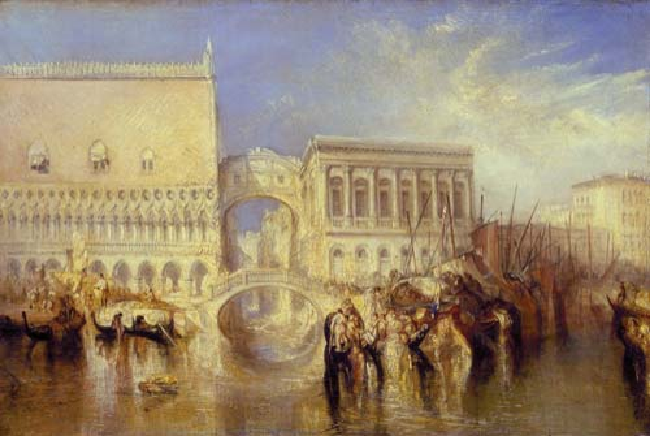Travel Reference
In-Depth Information
Venice stoked Turner's lust for reflected, golden sunlight. You'll see both finished
works and unfinished sketches...uh, which is which?
Seascapes
The ever-changing sea was his specialty, with waves, clouds, mist, and sky churning and
mixing together, all driven by the same forces.
Turner used oils like many painters use watercolors. First, he'd lay down a back-
ground (a “wash”) of large patches of color, then he'd add a few dabs of paint to suggest a
figure. (Some artists might use pencil lines to sketch out their figures, but Turner avoided
that.) The final product lacked photographic clarity but showed the power and constant
change in the forces of nature. He was perhaps the most prolific painter ever, with some
2,000 finished paintings and 20,000 sketches and watercolors.
Late Works
The older Turner got, the messier both he and his paintings became. He was wealthy, but
he died in a run-down dive, where he'd set up house with a prostitute. Yet the colors are
brighter and the subjects less pessimistic than in the dark and brooding early canvases.
His last works—whether landscape, religious, or classical scenes—are a blur and swirl of
colors in motion, lit by the sun or a lamp burning through the mist. Even Turner's own
creations were finally dissolved by the swirling forces of nature.

